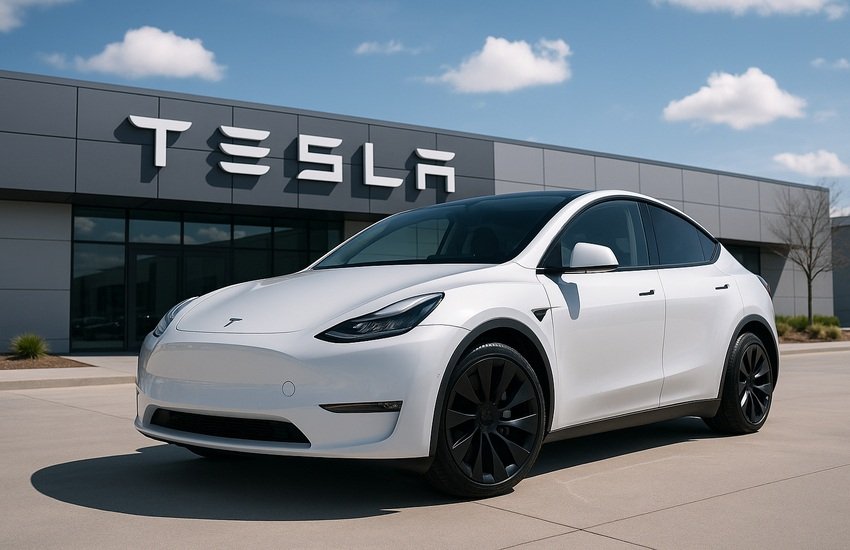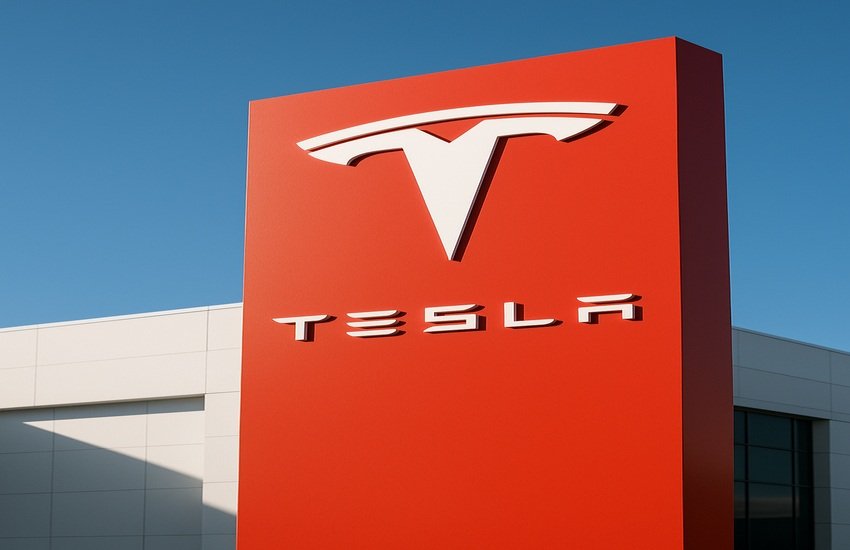Sign Up For Free To Keep Reading
Tesla’s recent unveiling of its Megapack 3 and the all-new Megablock could mark a pivotal moment in its shift from being seen purely as a carmaker to a vertically integrated energy company. While Tesla’s robotaxi launch and AI developments have dominated headlines, the energy division—specifically industrial battery storage—is quietly becoming a major pillar. The Megablock is a fully integrated, utility-scale energy solution, reducing construction costs by 40% and installation times by 23%. Alongside this, Tesla deployed 37.9 GWh of energy storage over the last 12 months, an 83% increase year-over-year, pushing energy segment sales to an annualized run rate exceeding $11 billion. With Megafactory expansions and LFP battery production coming online, Tesla is accelerating its bid to dominate grid-scale storage. As auto margins compress and sales volume shrinks, energy now offers a growth vector with better margins, recurring revenues, and massive demand from AI-driven data center expansion and grid decarbonization efforts.
Megablock Slashes Costs By 40% — A Game-Changer For Grid-Scale Energy
Tesla’s Megablock introduces a transformative level of integration in grid-scale energy storage. The product merges batteries, switchgear, and transformers into a single, pre-engineered system that cuts installation time by 23% and construction costs by 40%, according to Tesla. The cost and time savings are not marginal—they fundamentally shift the economics of utility-scale battery storage, making it more viable for grid operators and industrial customers facing increasing electricity volatility and demand from AI data centers. The unit economics of Megablock allow for rapid deployment at scale, positioning Tesla as a turnkey supplier for the grid modernization that is becoming urgent in both developed and developing markets. This is especially critical given U.S. grid infrastructure’s aging assets and growing stress from peak loads. Tesla’s ability to offer a plug-and-play solution built with its own battery tech, in-house electronics, and manufacturing expertise gives it a vertical stack advantage competitors lack. Moreover, these developments are supported by domestic manufacturing strategies, such as the planned LFP battery production facility and the third Megafactory set to open in Houston by 2026. With policy shifts like the expiration of solar and storage credits under the Big Bill, Tesla’s ability to reduce project CAPEX is now a key competitive edge, allowing it to weather policy volatility and remain attractive to large commercial and government clients.
Energy Storage Sales Hit $11B — Growing 83% Year-Over-Year
Tesla’s energy segment has quietly scaled to a size that would rival many standalone public companies. Over the last twelve months, the company deployed 37.9 GWh of battery storage—up 83% from the prior year—implying an annualized revenue run rate exceeding $11 billion. This growth was achieved despite macro headwinds such as tariffs and the phasing out of storage incentives. It also follows Tesla’s record Powerwall deployment in Q2 and growing traction with industrial and data center clients. In an environment where AI infrastructure is placing enormous demand on the grid, batteries are essential for managing power volatility. Tesla is benefiting from this demand and has signaled strong second-half deployment expectations. While quarterly deployment volumes may vary due to project schedules, the margin profile has improved materially, with Tesla achieving its highest energy gross profit to date in Q2 2025. Notably, customers are willing to absorb tariff-related cost increases due to the urgency of deploying capacity quickly, indicating robust demand elasticity. Management sees a future where battery storage can effectively double U.S. power generation efficiency by enabling 24/7 operation of base-load assets. This strategic insight suggests Tesla’s energy business is not just supplementary to auto—it’s foundational to the future grid. The segment’s growth is not only outpacing the auto business but is doing so with improving margins, recurring contracts, and regulatory tailwinds from decarbonization mandates worldwide.
Analysts Turning Bullish As Tesla Becomes More Than An Automaker
Tesla’s transformation is drawing renewed optimism from equity analysts. William Blair recently called the Megablock a “game-changer” for the grid storage market, stating it validates the firm’s bullish thesis on Tesla’s energy segment. The shift in narrative is significant: after years of investor focus on electric vehicle volumes, pricing, and margins, Tesla’s growing footprint in real-world AI, humanoid robotics, and now energy infrastructure is forcing a re-rating of its business model. Elon Musk emphasized on the recent earnings call that battery storage could become one of Tesla’s biggest businesses, and that few people fully grasp the scale of battery demand globally. Importantly, this is occurring at a time when automotive sales are plateauing. Regulatory setbacks, such as the expiration of U.S. EV credits and new tariff pressures, are creating drag on the core business, while energy storage continues to gain ground. The market is starting to reflect this pivot. Tesla’s valuation multiples have surged again: NTM EV/EBITDA is at 72.8x and P/E has reached 179.9x as of September 10, 2025. Such high valuation implies the market is pricing in multi-segment growth potential—not just from autos, but from energy and AI initiatives. With Optimus, Dojo, and robotaxis still early in monetization, energy is the most mature non-auto driver, already generating material revenue and margins. Institutional interest is likely to increase as the narrative shifts from a cyclical EV manufacturer to a core energy and AI infrastructure player.
Auto Sales Down 13% Y/Y — Core Business Still Struggling
Despite the bullish developments in energy and AI, Tesla’s core auto business remains under pressure. Vehicle deliveries declined 13% year-over-year, even as the company introduced an updated Model Y and began production of its more affordable model. Management attributed the softness to the repeal of the $7,500 IRA EV credit and the impact of tariffs, which are beginning to materially flow through to cost of goods sold. Tesla’s decision to front-load incentives earlier in the quarter also indicates difficulty in maintaining pricing power, particularly in the U.S. market. Moreover, the ramp of the new low-cost vehicle has been delayed due to capacity prioritization and complexity, pushing the timeline into Q4. While FSD adoption has improved post v12 rollout, take rates are still low, and the company continues to subsidize subscriptions to build the user base. Even Elon Musk noted that many Tesla owners have yet to try FSD despite owning capable hardware. On the production side, Tesla continues to invest heavily, with CapEx guidance exceeding $9 billion for the year, largely driven by AI, robotaxi, and manufacturing expansion. These investments strain free cash flow, which totaled just $146 million in Q2. While the robotaxi and autonomy efforts may eventually yield high-margin services, the near-term profitability and volume growth of the auto business remain constrained. With regulatory credit sales expected to fall and competition intensifying globally, the auto segment no longer carries the financial momentum it once did, making diversification into energy and other verticals more than just strategic—it’s necessary.
Key Takeaways
Tesla’s Megapack 3 and Megablock mark a strategic inflection point in the company’s evolution from an automaker to a diversified energy and AI infrastructure provider. The energy business is showing rapid growth, improved margins, and rising customer demand even in the face of policy and tariff headwinds. The launch of Megablock, with its cost-saving and installation benefits, enhances Tesla’s appeal in a grid-constrained world increasingly reliant on battery storage for stability and growth. However, the core automotive segment remains under pressure with declining volumes, rising costs, and uncertain incentives. Tesla’s sky-high valuation—currently trading at 179.9x LTM earnings and 225x free cash flow—demands flawless execution across all verticals to justify its multiple. Investors should weigh the company’s breakthrough potential in energy and AI against operational headwinds and execution risk in its legacy auto business. As Tesla transitions, the re-rating of its energy segment may provide support, but its long-term valuation hinges on consistent delivery across its multi-pronged portfolio.





